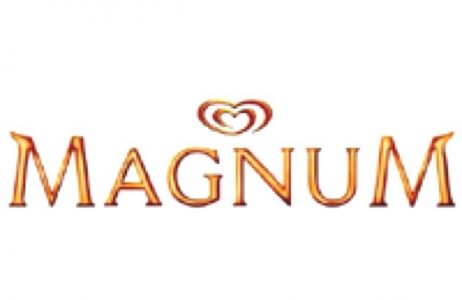Professional Italian Transcription Services
Italian is one of the world’s most expressive and dynamic languages, spoken by millions in Italy, Switzerland, and international Italian-speaking communities. With its rich history, nuanced grammar, and strong regional influences, Italian transcription requires a deep understanding of formal structures, idiomatic expressions, and industry-specific terminology. Whether you need transcripts for corporate meetings, media productions, academic research, or legal proceedings, a well-crafted transcription ensures clarity, professionalism, and accuracy.
At GoLocalise, we specialise in Italian transcription services, converting spoken content into high-quality, structured text. Our native-speaking transcriptionists have expertise in business documentation, legal records, film and TV production, and research materials, ensuring that every transcription meets industry-specific standards.
Italian is a language where intonation, context, and formality significantly impact meaning. Our transcriptionists do more than simply convert speech into text—they ensure that your content is accurately transcribed, polished, and contextually precise, making it suitable for professional, media, and legal applications.
By choosing GoLocalise, you partner with Italian language specialists who provide linguistically precise, culturally relevant, and industry-appropriate transcriptions that reflect the nuances of formal and conversational Italian.
We used GoLocalise to voice several of our films in Vietnamese. The service was friendly and professional. Being able to attend the recording sessions gave me confidence; the sound engineer had taken a lot of time to familiarise himself with our films and scripts, and the voice talents were incredibly competent and good at adapting to any changes in the scripts as we recorded. The whole process was incredibly smooth and I felt in safe hands.
Let's get started!
Bespoke Italian Transcription Services for Every Industry
Every transcription project is unique, which is why we offer customised Italian transcription solutions to suit a variety of professional requirements. Our experts ensure that spoken language is transformed into clear, structured, and reader-friendly text, adapted to specific industry needs.
- Detailed verbatim transcription captures every word, pause, hesitation, and background sound, making it the ideal choice for legal proceedings, journalistic investigations, and qualitative research. This level of precision ensures complete transparency in critical fields.
- Refined transcription enhances readability by eliminating redundant words and refining sentence flow while preserving the original intent, making it perfect for corporate communication, business documentation, and media scripts.
- Summarised transcription condenses lengthy discussions, roundtable meetings, and interviews into structured highlights, ensuring that key takeaways are easy to extract for executive reports, government briefings, and academic research papers.
For companies working in bilingual markets, we also provide Italian and English transcription, ensuring seamless communication across international business, legal, and media sectors.
What Do Our Italian Audio and Video Transcription Services Include?
A voice-to-text method that captures everything spoken, including interjections, signs of emotion (coughs, sighs, chuckles), false starts, and thought process shifts. It’s useful for reference during editing, but not ideal for finished, polished content.
This captures the speech exactly as it’s spoken, omitting filler words but without correcting grammar or sentence structure. It’s useful when accuracy is needed, but without polishing the final result.
Filler words, false starts, and mispronunciations are eliminated, with grammar corrected. This creates a refined document that reads more like proper text, ideal for publishing or any public-facing material.
Learn more about Transcription Services
Let's get started!
What Are the Benefits of Transcribing Your Italian Audio or Video Content with GoLocalise?
Take a podcast, for instance. By providing a text version of your audio content, search engines like Google can easily index and include it in their search results. When people search for keywords related to your subject matter, they’re far more likely to come across your material. This not only boosts your visibility but also significantly increases traffic to your site, expanding your reach and enhancing your online presence.
Journalists, bloggers, and other content creators often rely on quotes and citations to back up their arguments. When faced with two equally credible sources, one of which has already been transcribed, the transcribed version is much more likely to be chosen. Having your content available in written form makes it far easier for others to reference and quote, increasing the chances of your material being used in a variety of publications and discussions.
Creating high-quality audiovisual content, whether a podcast or a video, is both time-consuming and expensive. Why restrict it to just one format or platform? With a transcript, you can repurpose your content into a range of new formats, such as blog posts, social media updates, or short teaser clips that can attract new audiences. This process not only drives more traffic to your site but also ensures that your original content continues to serve a variety of purposes, maximising its value and impact.
One of the most important benefits of transcription is the increased accessibility it provides, particularly for people with hearing impairments. Without a written transcript, your audio or video content remains completely inaccessible to the deaf and hard-of-hearing communities. Providing a transcript ensures that everyone, regardless of their hearing ability, can engage with your content, helping to make your message more inclusive and far-reaching.
In the UK alone, there are approximately 550,000 Polish speakers, along with over a million speakers of languages such as Punjabi, Gujarati, Bengali, and Urdu. For many second-language speakers, especially when the content involves complex topics or colloquial expressions, following along with audio in a non-native language can be challenging. By providing a written transcript, you give these audiences a valuable resource to help them understand and engage with your content more effectively, bridging the gap between language barriers.
Creating your audiovisual content, whether that's a podcast or a video of some kind, is often an incredibly time-consuming and expensive process. So why use it for only one purpose? You can use a transcription to repurpose your materials into a blog or social media post, to drive traffic to your website, to use as a teaser to bring people to a full-length podcast, and many more uses too.
Key Industries That Benefit from Italian Transcription
Italian transcription is an essential service across multiple industries, helping businesses, institutions, and creatives capture, organise, and professionally format spoken content. We provide specialised transcription services tailored to these key sectors:
- Corporate & Finance – Companies in Italy and beyond rely on transcription for shareholder meetings, financial briefings, and internal communications, ensuring that verbal exchanges are properly recorded and structured for professional use.
- Legal & Compliance – Law firms, courts, and regulatory bodies require accurate transcriptions of court hearings, depositions, and legal contracts, ensuring that every spoken detail is documented with precision.
- Media & Entertainment – Italian film, television, radio, and digital media productions need transcriptions for interviews, subtitles, and script documentation, ensuring that content is accessible, archivable, and ready for adaptation.
- Education & Research – Universities, researchers, and educators use transcription for lectures, academic discussions, and dissertation interviews, ensuring that spoken information is preserved for future reference.
- Technology & AI Development – Italian transcription supports speech recognition models, AI-powered voice applications, and machine learning datasets, enhancing digital accessibility for Italian-speaking users worldwide.
At GoLocalise, we ensure that each transcription aligns with the standards of your industry, guaranteeing clarity, accuracy, and professionalism.

Leave your project to the experts at GoLocalise so that you can relax and be assured of getting top-notch results
Every single detail will be analysed, studied and looked after so that you do not need to worry.
Some would say it’s not too classy to blow our own trumpet… but we just like to point out two very important details.
We have achieved ISO 9001 Quality Management certification in recognition of our consistent performance and high standards, and ISO 14001 Environmental Management because we care about our planet!
And if you are still curious and want to know more about us, why not have a look at our studio page.
Learn more about Transcription Services
Let's get started!
Why Italian Transcription Demands Native Expertise
Italian is a highly structured yet fluid language, where grammatical agreement, sentence length, and dialectical influences play a significant role in meaning. Unlike word-for-word transcription, which can lead to misinterpretation, accurate transcription requires a deep understanding of linguistic context.
Italian varies significantly across regions, with distinct accents, vocabulary, and expressions. A term commonly used in northern Italy may be unfamiliar or carry a different meaning in the south, requiring careful adaptation in transcription. Without native expertise, transcriptions may fail to capture the appropriate tone, level of formality, or intended meaning.
For example, while “Buongiorno” is a formal greeting used in professional settings, a more informal alternative like “Ciao” is only suitable in casual contexts. These distinctions are essential when transcribing content for business, law, or media.
At GoLocalise, our native Italian transcriptionists ensure that each transcript is precisely formatted, culturally accurate, and tailored to professional expectations, maintaining both linguistic integrity and readability.


Our Secure and Streamlined Italian Transcription Process
We follow a rigorous workflow that ensures confidentiality, efficiency, and industry compliance in every transcription project:
- Secure File Submission – Clients upload their recordings through our encrypted platform, guaranteeing data security and confidentiality.
- Expert Native Transcriptionists – Our team transcribes content with full attention to grammar, dialectal variations, and industry-specific terminology.
- Multi-Stage Editing & Quality Control – Every transcript undergoes detailed proofreading and quality assurance checks, ensuring linguistic consistency and accuracy.
- Client Collaboration & Refinements – We offer custom formatting, terminology refinements, and structural adaptations to meet specific industry standards.
- Final Delivery in Your Preferred Format – Transcriptions are provided in time-coded, structured, or standard industry formats, ready for corporate, legal, media, or research applications.
For high-volume transcription projects, such as government documentation, media production, and multilingual business operations, we provide scalable solutions that maintain high quality and efficiency.
Why Choose GoLocalise for Italian Transcription?
Partnering with GoLocalise means working with dedicated professionals who understand the complexities of Italian linguistics, industry-specific terminology, and cultural adaptation.
- Native Italian Linguists – Our transcriptionists ensure that transcriptions reflect correct grammar, dialectal nuances, and industry terminology, eliminating errors.
- Customised Transcription Services – Whether you need verbatim legal transcriptions, structured corporate documentation, or bilingual transcripts, we tailor our services to your specific needs.
- Industry-Focused Accuracy – Our transcription services meet legal, corporate, media, and research standards, ensuring professional usability.
- Scalable & Reliable Solutions – From one-time projects to enterprise-level transcription needs, we provide on-time delivery and high-quality documentation.
Let us help you transform spoken Italian into structured, professional text. Contact us today to learn how GoLocalise can support your business, media, or research transcription needs.

What our happy customers say
Philippa Strandberg-Long
Deputy Course Leader - Acting, Italia Conti
Thomas Kennedy
Designer at Atlas Knowledge

Marion Hirst
Translation Project Manager at Language Wire

Patricia Leon-Fedorko
Account Specialist at Advanced Language

Josie Gallo
Content Co-ordinator at Medical Aid Films
Jo Samuel
Animator at Pixel Circus


Price Match Promise
Challenge Our Prices, Enjoy Our Quality















